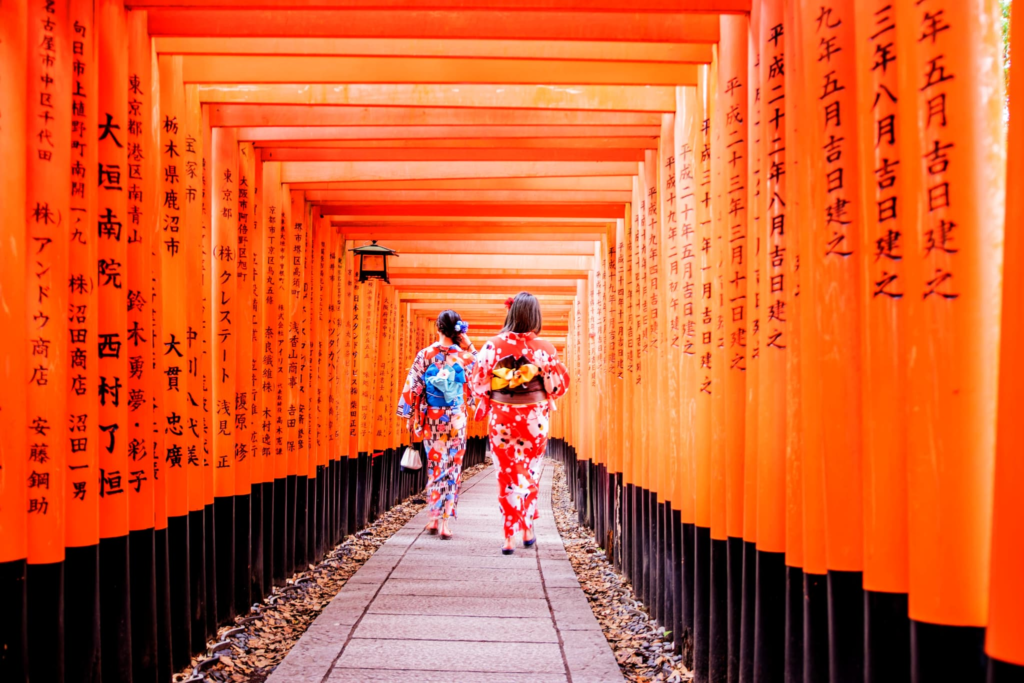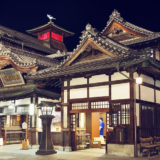Japan is a country steeped in long history and rich culture. With various historical landmarks from ancient to modern times, each spot tells a story of Japan’s history. Here, we introduce must-see historical landmarks in Japan for foreign visitors. Enjoy a journey through time while feeling the charm of ancient Japan.
1. Kyoto

Kyoto is known as Japan’s ancient capital, home to numerous historical landmarks. With a history dating back to the Heian period, it retains many temples, shrines, and traditional townscapes. Kyoto, the birthplace of Japanese culture, allows visitors to feel the old-time atmosphere of Japan.
Kiyomizu-dera: Kiyomizu-dera is one of Kyoto’s iconic landmarks and a UNESCO World Heritage site. Its beautiful wooden architecture attracts many tourists. The view from the main hall overlooking Kyoto city, cherry blossoms in spring, and autumn foliage are breathtaking. The view from the stage of Kiyomizu is particularly worth seeing.
Kinkaku-ji: Also known as Rokuon-ji, Kinkaku-ji is famous for its golden pavilion harmonizing with its garden. The reflection of the golden pavilion on the pond is stunning, and many visitors capture this scene in photos. The snow-covered Kinkaku-ji in winter is also charming. Walking through the garden, you can feel the spirit of Zen.
Fushimi Inari Taisha: Fushimi Inari Taisha is the head shrine of about 30,000 Inari shrines across Japan. The “Senbon Torii” (thousand torii gates) is very famous, leaving a strong impression on visitors. Walking through the red torii gates and climbing the mountain path, you can experience a unique atmosphere blending nature and history.
Nijo Castle: Nijo Castle was built by Tokugawa Ieyasu in the early Edo period and holds great historical value. The Ninomaru Palace and gardens inside the castle showcase the architectural style and beauty of the Edo period. It is also known for cherry blossoms, painting the castle grounds beautifully in spring.
2. Nara

Nara, along with Kyoto, is one of Japan’s ancient capitals, dotted with numerous historical landmarks. As the capital during the Nara period, many temples and ancient burial mounds remain. Nara’s historical sites allow you to feel the essence of ancient Japanese history.
Todai-ji: Todai-ji is famous for its Great Buddha Hall, one of the world’s largest wooden structures. The Great Buddha housed in the hall is impressive. The temple grounds contain many historical buildings and treasures, offering a full day’s worth of exploration.
Kasuga Taisha: Kasuga Taisha, founded in the Nara period, is known for its approximately 3,000 stone lanterns and 1,000 hanging lanterns. During the “Mantoro” (Lantern Festival), the lit lanterns create a magical atmosphere. The shrine’s forest is beautiful, blending nature and history harmoniously.
Horyu-ji: Horyu-ji is renowned as the world’s oldest wooden structure and a masterpiece of Asuka period Buddhist architecture. The five-story pagoda and Golden Hall are among its many historic buildings, showcasing Japanese Buddhist art. The wall paintings in the Golden Hall are particularly stunning.
Kofuku-ji: Founded by the Fujiwara clan in the Nara period, Kofuku-ji is symbolized by its five-story pagoda, the second tallest in Japan. The temple grounds also house the National Treasure Museum, displaying precious Buddhist statues and artworks.
3. Hiroshima

Hiroshima is a city filled with the history of World War II and a strong desire for peace. Known worldwide as the site of the atomic bomb in 1945, visiting Hiroshima’s historical landmarks allows you to feel the importance of peace and the horrors of war.
Atomic Bomb Dome: The Atomic Bomb Dome, a UNESCO World Heritage site, preserves a building that suffered from the atomic bomb. Visiting the Dome lets you understand the tragedy of war and the importance of peace. The adjacent Peace Memorial Park contains the Peace Memorial Museum, educating visitors about the bomb’s history and its impact.
Itsukushima Shrine: Itsukushima Shrine, a UNESCO World Heritage site, is known for its beautiful shrine and floating torii gate on the sea. During high tide, the torii gate appears to float on the water, and during low tide, you can walk to the gate. The shrine’s buildings are also stunning, showcasing Japanese architectural beauty.
Hiroshima Castle: Hiroshima Castle, built during the Sengoku period, is known as the “Carp Castle.” The castle grounds include a history museum, where you can learn about Hiroshima’s history and culture. It is also a famous cherry blossom spot, with beautiful blooms decorating the castle in spring.
Peace Boulevard: Peace Boulevard is a wide avenue running east-west through Hiroshima city, leading to the Peace Memorial Park and the Atomic Bomb Dome. Lined with trees and flowers symbolizing peace, it offers beautiful scenery for a peaceful walk.
4. Tokyo

Tokyo, Japan’s capital, is a city where modernity and historical landmarks coexist. With a long history dating back to the Edo period, many historical buildings and cultural heritage sites remain. Visiting Tokyo lets you feel the blend of Japanese history and contemporary life.
Senso-ji Temple: Senso-ji Temple, one of Tokyo’s oldest temples, is a symbol of Asakusa. Starting from the large Kaminarimon gate and passing through Nakamise shopping street, you reach the temple grounds. The temple is especially beautiful at night when it is illuminated, creating a magical atmosphere.
Meiji Shrine: Meiji Shrine, dedicated to Emperor Meiji and Empress Shoken, is surrounded by the forest of Harajuku. The vast shrine grounds offer a peaceful escape from the city’s hustle and bustle. It is particularly crowded during New Year’s visits, allowing you to experience traditional Japanese customs.
Imperial Palace: The Imperial Palace, the residence of the Emperor, is a historical landmark attracting many tourists. The palace grounds include beautiful gardens and plazas, perfect for leisurely strolls. The East Gardens are open to the public for free, offering a chance to enjoy a splendid Japanese garden.
Edo-Tokyo Museum: The Edo-Tokyo Museum showcases the history and culture of Tokyo from the Edo period to the present. The museum features exhibits recreating Edo period townscapes and many artifacts reflecting daily life. Learning about Tokyo’s history here allows you to feel the old Japan.
5. Okinawa

Okinawa, once the Ryukyu Kingdom, has a unique culture distinct from the rest of Japan. Many historical sites reflect this unique history. Visiting Okinawa allows you to feel the fusion of Ryukyu and Japanese cultures.
Shuri Castle: Shuri Castle, the palace of the Ryukyu Kingdom, symbolizes Okinawa’s history and culture. Known for its distinctive red roof tiles and beautiful decorations, the castle houses many exhibits about Ryukyu history and culture. Although much of it was destroyed by fire in 2019, reconstruction efforts are ongoing.
Shikinaen Garden: Shikinaen Garden, once a villa for the Ryukyu royal family, features a beautiful Japanese garden. With ponds, stone bridges, and teahouses, it offers a serene atmosphere. The garden’s rich plant life provides stunning seasonal views.
Tamaudun Mausoleum: The Tamaudun Mausoleum, a UNESCO World Heritage site, is the tomb of the Ryukyu royal family. The stone tomb exudes dignity and historical weight. The surrounding beautiful nature offers a peaceful time.
Okinawa Prefectural Museum & Art Museum: This museum showcases the history and culture of the Ryukyu Kingdom. Exhibits include traditional crafts and historical artifacts, providing deep insights into Okinawa’s unique culture. The art museum also features contemporary Okinawan art.
Conclusion
A journey through Japan’s historical landmarks is a perfect opportunity for foreign visitors to deeply understand Japan’s charm. Each region, such as Kyoto, Nara, Hiroshima, Tokyo, and Okinawa, breathes different histories and cultures. Enjoy a journey through time, feeling the ancient atmosphere of Japan. Each landmark offers inspiration and new discoveries for visitors. Use this guide to plan your trip and enjoy exploring Japan’s historical heritage.

 Handn blog
Handn blog 
